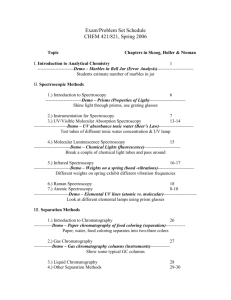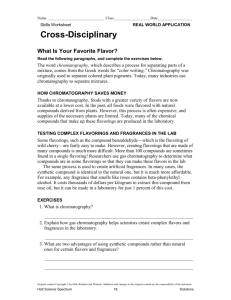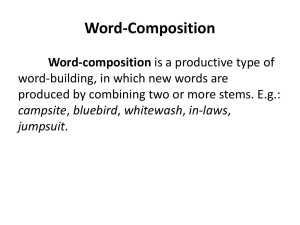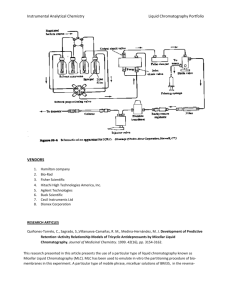Scientific abstract
advertisement
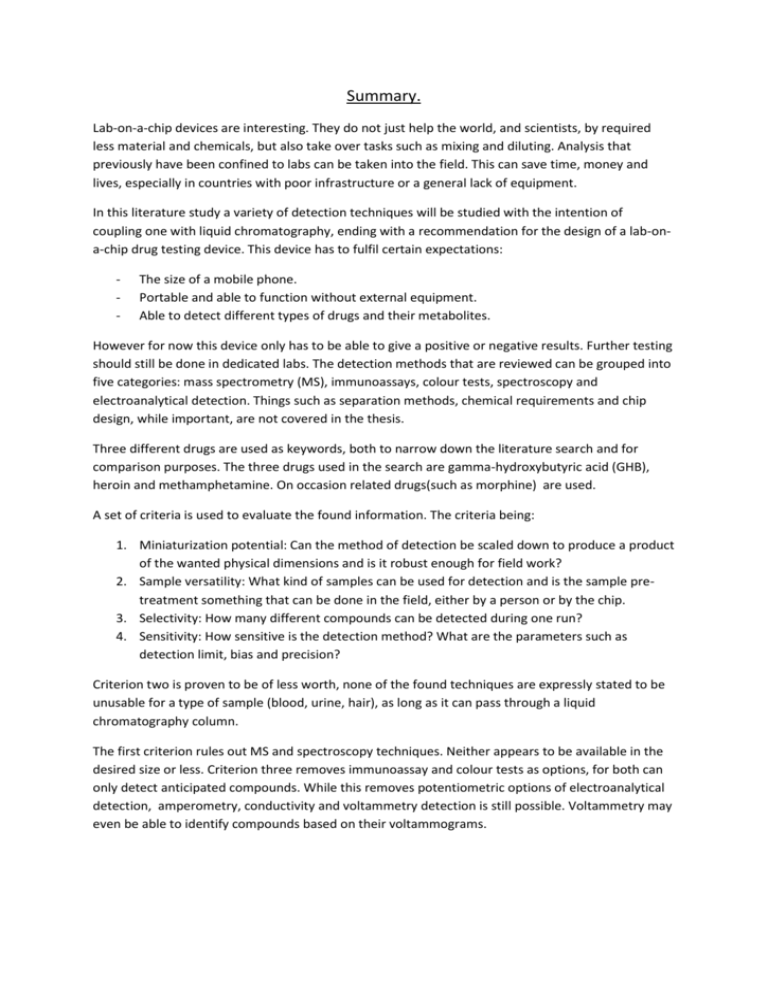
Summary. Lab-on-a-chip devices are interesting. They do not just help the world, and scientists, by required less material and chemicals, but also take over tasks such as mixing and diluting. Analysis that previously have been confined to labs can be taken into the field. This can save time, money and lives, especially in countries with poor infrastructure or a general lack of equipment. In this literature study a variety of detection techniques will be studied with the intention of coupling one with liquid chromatography, ending with a recommendation for the design of a lab-ona-chip drug testing device. This device has to fulfil certain expectations: - The size of a mobile phone. Portable and able to function without external equipment. Able to detect different types of drugs and their metabolites. However for now this device only has to be able to give a positive or negative results. Further testing should still be done in dedicated labs. The detection methods that are reviewed can be grouped into five categories: mass spectrometry (MS), immunoassays, colour tests, spectroscopy and electroanalytical detection. Things such as separation methods, chemical requirements and chip design, while important, are not covered in the thesis. Three different drugs are used as keywords, both to narrow down the literature search and for comparison purposes. The three drugs used in the search are gamma-hydroxybutyric acid (GHB), heroin and methamphetamine. On occasion related drugs(such as morphine) are used. A set of criteria is used to evaluate the found information. The criteria being: 1. Miniaturization potential: Can the method of detection be scaled down to produce a product of the wanted physical dimensions and is it robust enough for field work? 2. Sample versatility: What kind of samples can be used for detection and is the sample pretreatment something that can be done in the field, either by a person or by the chip. 3. Selectivity: How many different compounds can be detected during one run? 4. Sensitivity: How sensitive is the detection method? What are the parameters such as detection limit, bias and precision? Criterion two is proven to be of less worth, none of the found techniques are expressly stated to be unusable for a type of sample (blood, urine, hair), as long as it can pass through a liquid chromatography column. The first criterion rules out MS and spectroscopy techniques. Neither appears to be available in the desired size or less. Criterion three removes immunoassay and colour tests as options, for both can only detect anticipated compounds. While this removes potentiometric options of electroanalytical detection, amperometry, conductivity and voltammetry detection is still possible. Voltammetry may even be able to identify compounds based on their voltammograms.



